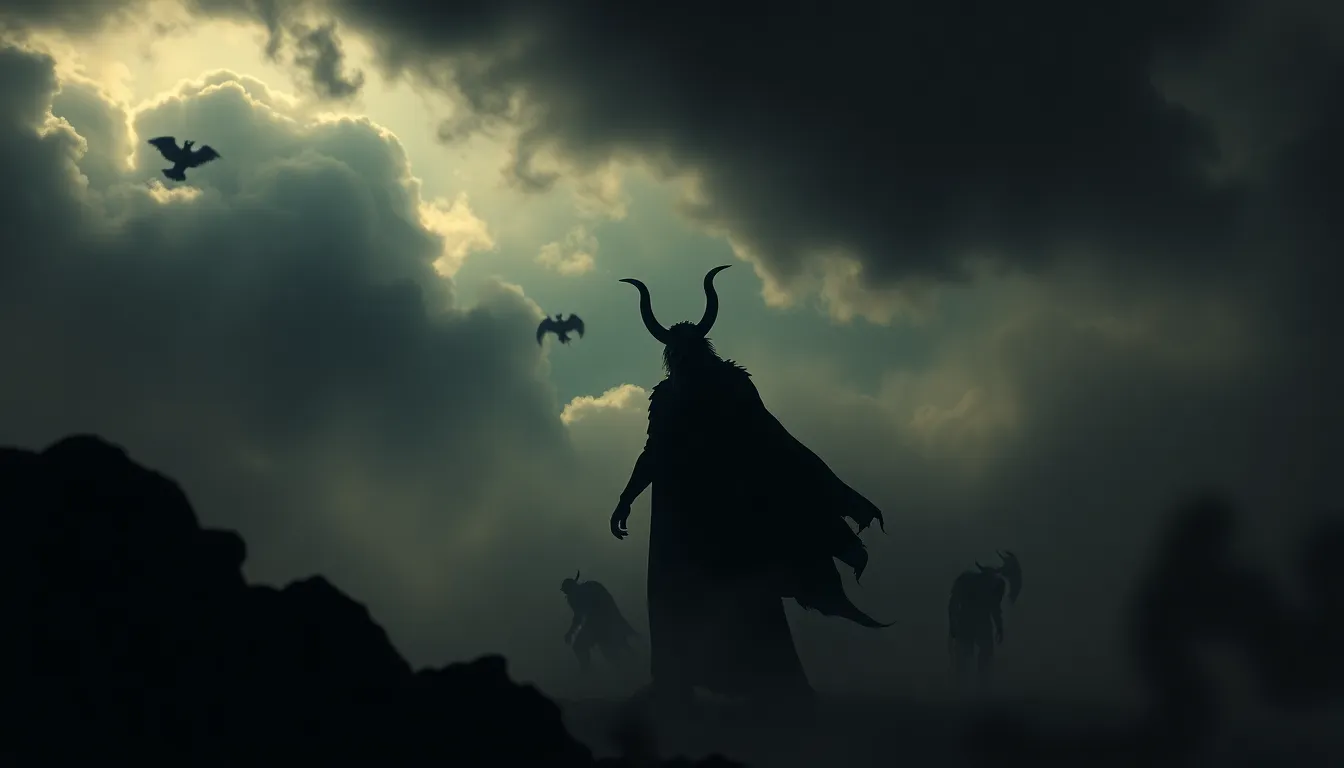In the grand tapestry of mythology and religion, few figures spark as much intrigue as Satan’s offspring. Is it a mischievous little demon with a penchant for chaos or perhaps an unsuspecting human walking the earth? The quest to uncover the identity of this notorious creation has puzzled theologians, scholars, and curious minds alike for centuries.
Table of Contents
ToggleUnderstanding Satan’s Creation
Satan’s creation often refers to various interpretations associated with his progeny or manifestations. Many interpretations view this creation as a symbol of evil or chaos. The offspring of Satan is sometimes depicted as demonic entities serving dark purposes. In religious texts, specific references mention the Nephilim as offspring of fallen angels, sometimes linked to Satan’s influence.
Scholars frequently debate the nature of Satan’s creation. Some argue that Satan represents humanity’s moral struggles rather than a literal offspring. This perspective emphasizes the internal conflict between good and evil present in every individual. Other theories propose that Satan’s child embodies temptation and moral depravity, casting a shadow over humanity’s choices.
Different religious traditions offer unique insights into Satan’s creation. In Christianity, the concept of the Antichrist emerges, often associated with Satan’s influence on the world. This character typically represents ultimate rebellion against divine authority. In folklore, Satan’s offspring might manifest as witches, demons, or cursed beings, further complicating interpretations.
Questions about the purpose of Satan’s creation persist. Some interpretations suggest this creation serves to challenge humanity’s faith and resilience. Others view it as a reflection of the darker aspects of human nature, inviting individuals to confront their fears.
Ultimately, the ambiguity surrounding Satan’s creation continues to inspire intrigue and debate. The exploration of these themes allows individuals to reflect on the nature of good and evil within their lives. Insights gained from various interpretations contribute to an understanding of the complexities surrounding this enigmatic figure.
Theological Perspectives

Satan’s creation evokes a rich tapestry of theological interpretations and insights across various religious traditions.
Biblical References
The Bible offers several references related to Satan’s offspring. Notably, Genesis 6:1-4 introduces the Nephilim, described as giants born of the “sons of God” and the “daughters of men.” This passage ties fallen angels to humanity, suggesting demonic influence. Additionally, Matthew 13:38 refers to the “tares” or “weeds,” symbolizing the children of the wicked one, highlighting a connection to evil. Revelation 13:4 presents the Antichrist, often viewed as Satan’s most prominent child, embodying ultimate rebellion against God. Each reference contributes to a broader understanding of evil’s manifestation.
Interpretations Through History
Throughout history, diverse interpretations emerge regarding Satan’s creation. Early Christian theologians often debated the nature of evil, framing Satan as a representation of humanity’s moral struggles. In medieval times, folklore depicted witches and demons as Satan’s offspring, illustrating cultural anxieties. Enlightenment thinkers shifted focus to internal conflict rather than literal interpretations. Contemporary scholars analyze Satan’s legacy, viewing his creation as a symbol of chaos and moral ambiguity. These varied interpretations reflect the complexity surrounding evil’s origins and nature.
Literature and Popular Culture
Satan’s creation manifests in various forms across literature and popular culture, inviting rich analysis.
Representation in Fiction
In novels and films, Satan’s child often appears as a character entwined with themes of rebellion and chaos. Examples include Rosemary’s Baby by Ira Levin, where a woman’s child carries dark implications of demonic influence. John Milton’s Paradise Lost portrays Satan’s offspring as embodiments of temptation and moral conflict. Additionally, the Nephilim from Genesis serve as supernatural figures illustrating the struggle between divine law and human corruption. Such representations often resonate with audiences, highlighting moral dilemmas and the complexities of human nature.
Symbolism in Modern Media
In contemporary media, symbols associated with Satan’s creation frequently appear in various genres. Shows like The Chilling Adventures of Sabrina depict witches linked to malevolent forces, reflecting society’s fascination with the occult. Video games such as Dante’s Inferno draw on infernal imagery to challenge concepts of sin and redemption. Films exploring the Antichrist theme, like The Omen, emphasize the struggle against evil’s influence. These modern interpretations enable audiences to contemplate moral ambiguity while engaging with deep-rooted fears and beliefs regarding good and evil.
Psychological Interpretations
Psychological interpretations of Satan’s creation explore various archetypes and concepts related to human behavior and morality. The insights reflect the complexities individuals face.
Archetypes in Human Behavior
Satan’s creation often manifests through archetypes representing internal struggles. In literature and mythology, characters display traits such as ambition and rebellion. These traits symbolize humanity’s darker impulses. The archetype of the trickster frequently aligns with the figure of Satan, portraying chaos and subversion. They challenge societal norms, prompting reflection on moral boundaries. Every individual harbors both light and dark aspects, leading to internal conflict. Jungian psychology emphasizes the importance of acknowledging these aspects for personal growth. Both culture and religion shape the understanding of these archetypes, influencing perceptions of good and evil.
The Concept of Evil
Evil emerges as a central theme in discussions about Satan’s creation. Many traditions view evil as an inherent part of the human experience. Some scholars argue that evil stems from ignorance or fear rather than a literal embodiment. In Christian theology, Satan represents ultimate rebellion, showcasing humanity’s capacity for malevolence. The concept of evil invites inquiry into moral dilemmas individuals face daily. Different cultures interpret evil through various lenses, highlighting societal values. Understanding evil requires examining its impact on human behavior. The continual evolution of these interpretations contributes to the ongoing discourse surrounding Satan’s legacy.
The exploration of Satan’s creation reveals a multifaceted character that embodies the struggle between good and evil. From the Nephilim to the Antichrist and various representations in folklore and literature, interpretations continue to evolve. This figure serves as a mirror reflecting humanity’s darker impulses and moral dilemmas.
As society grapples with these themes, the fascination with Satan’s offspring persists, prompting deeper reflection on the nature of evil. Whether viewed through a theological lens or a psychological perspective, the legacy of Satan’s creation invites ongoing inquiry into the complexities of human nature and the eternal battle between light and darkness.









